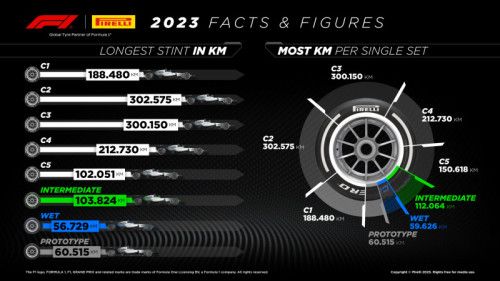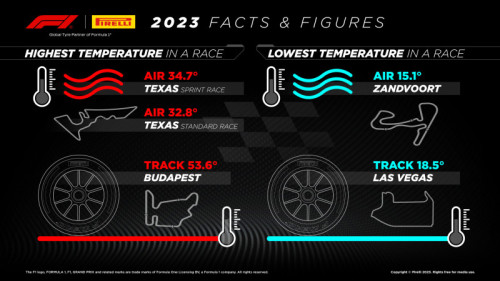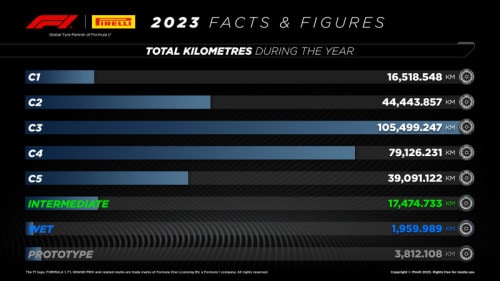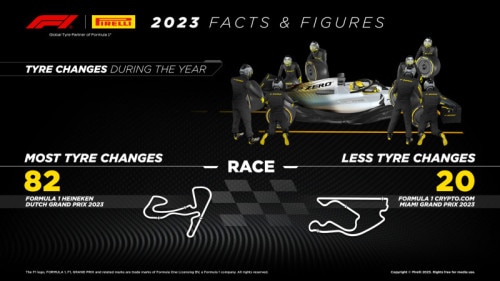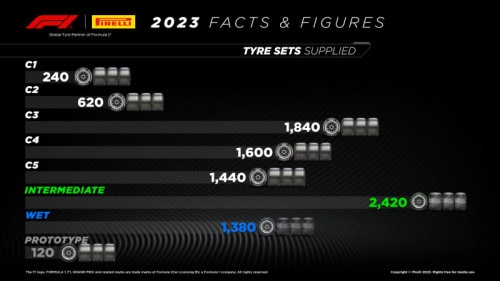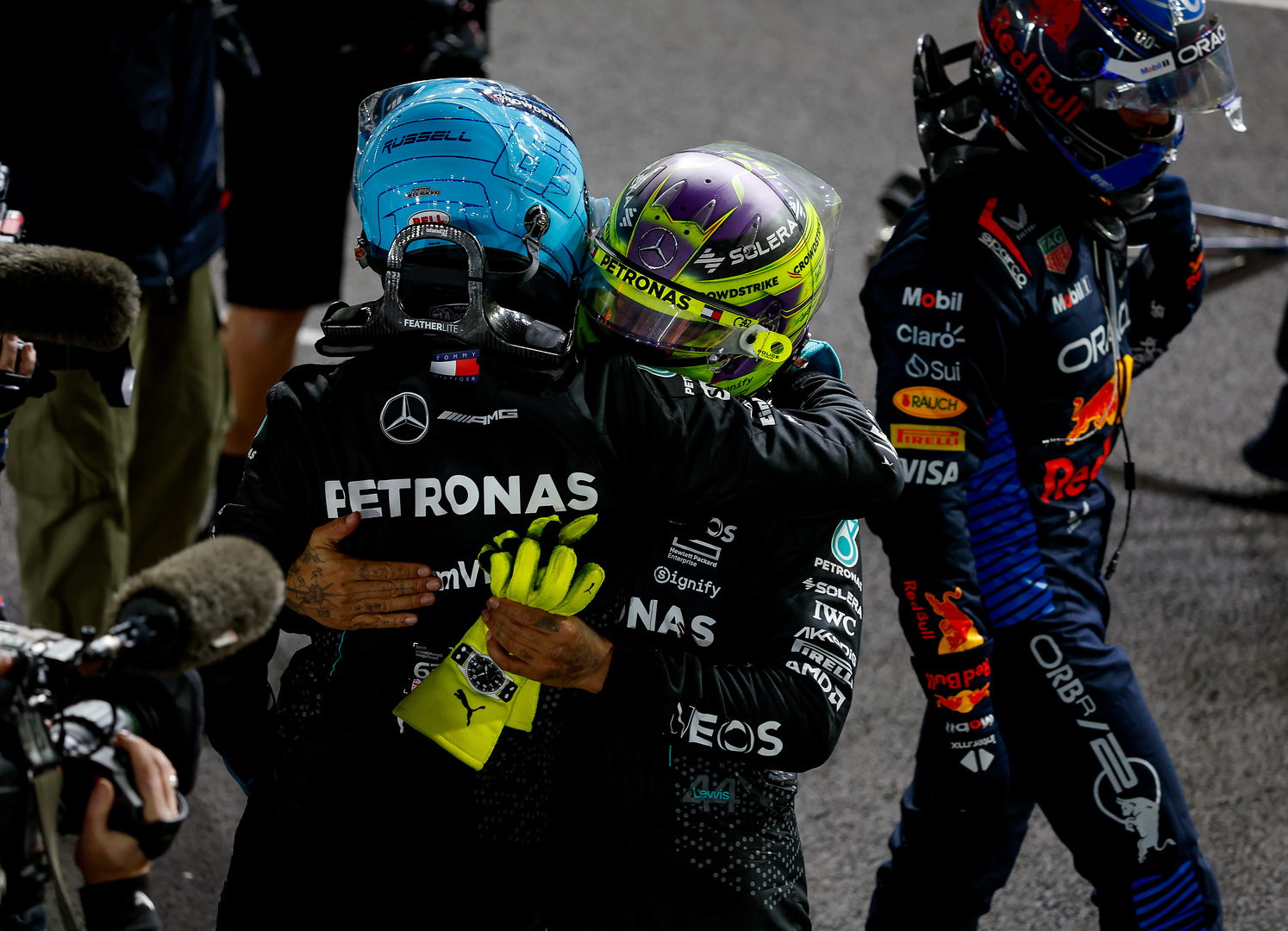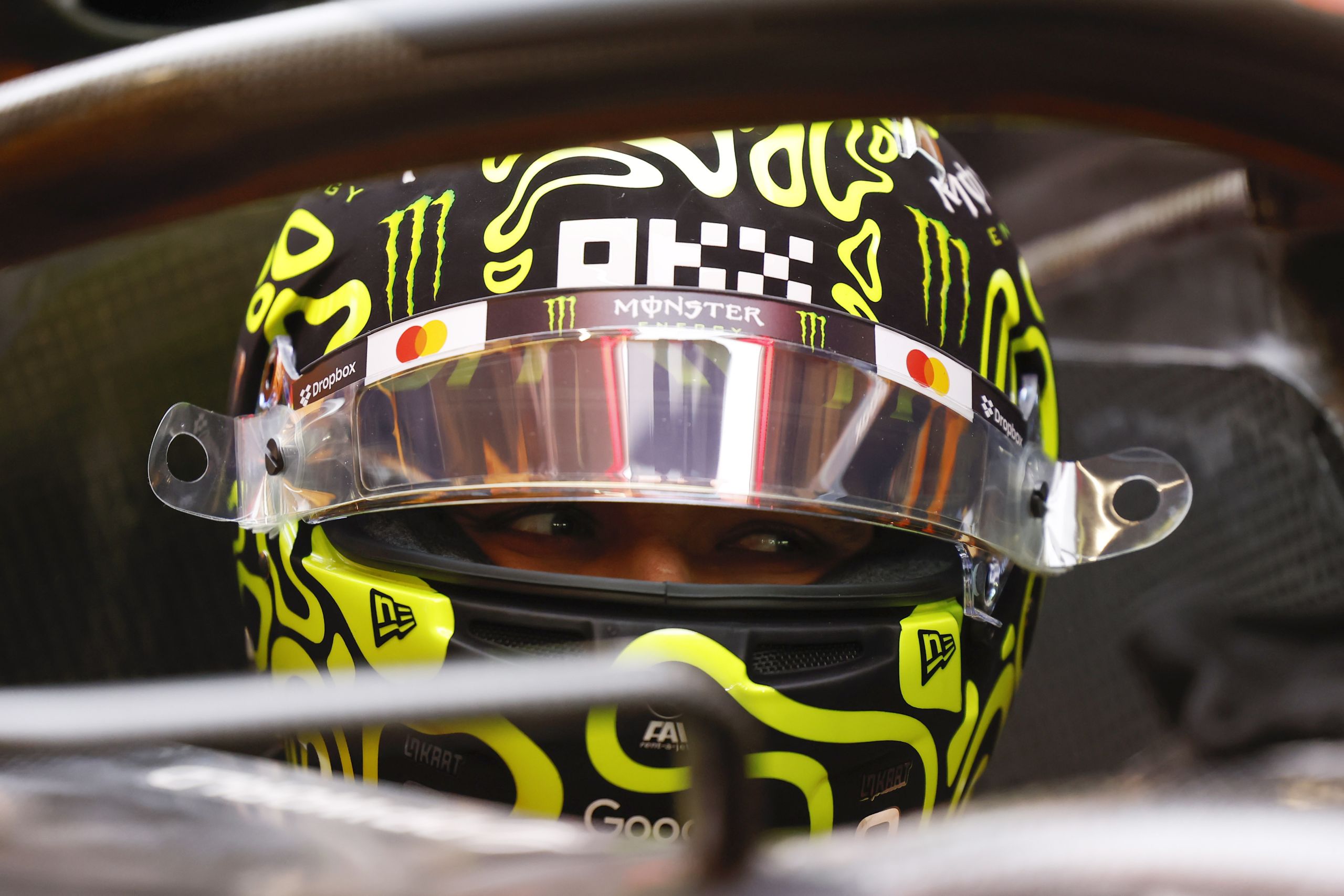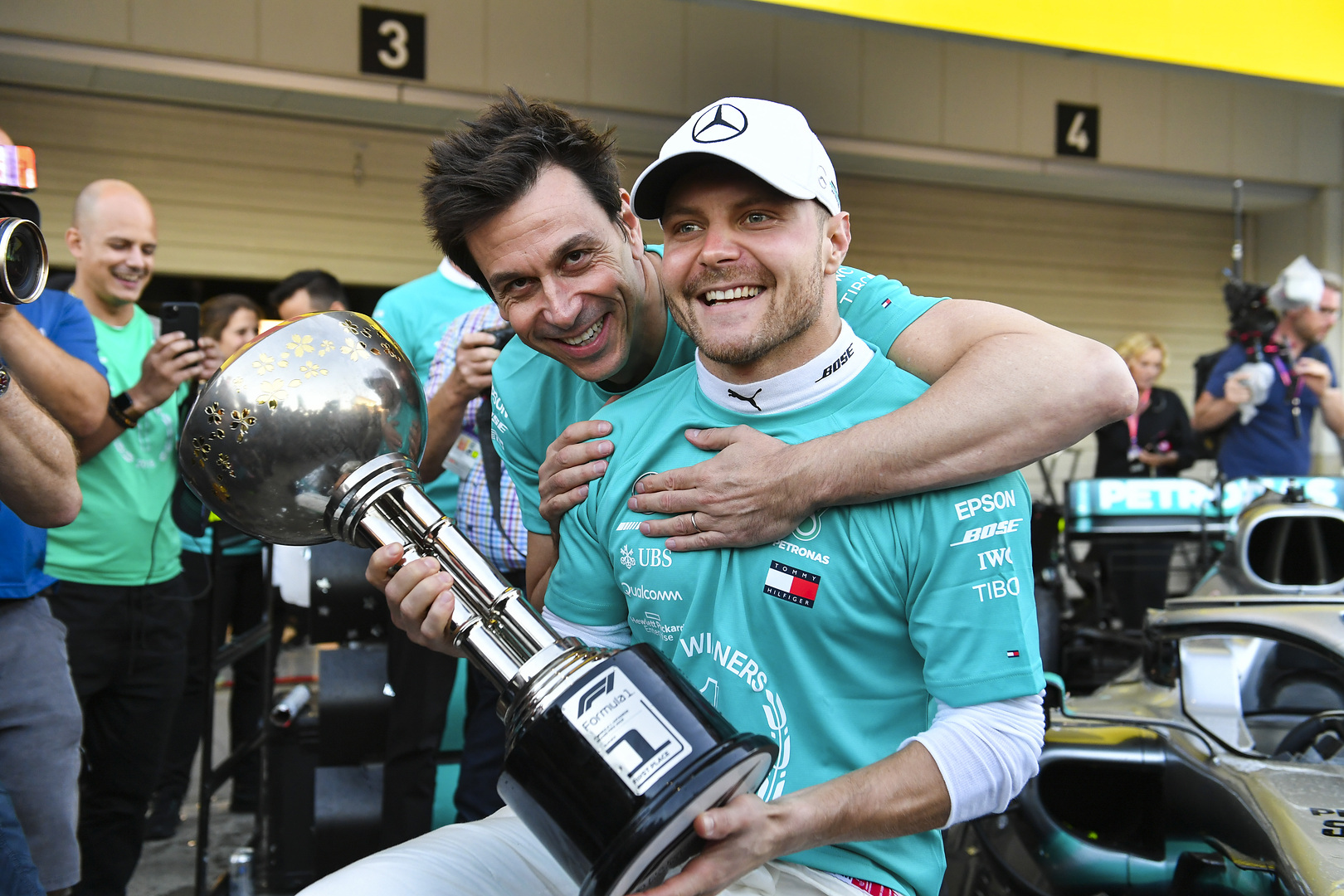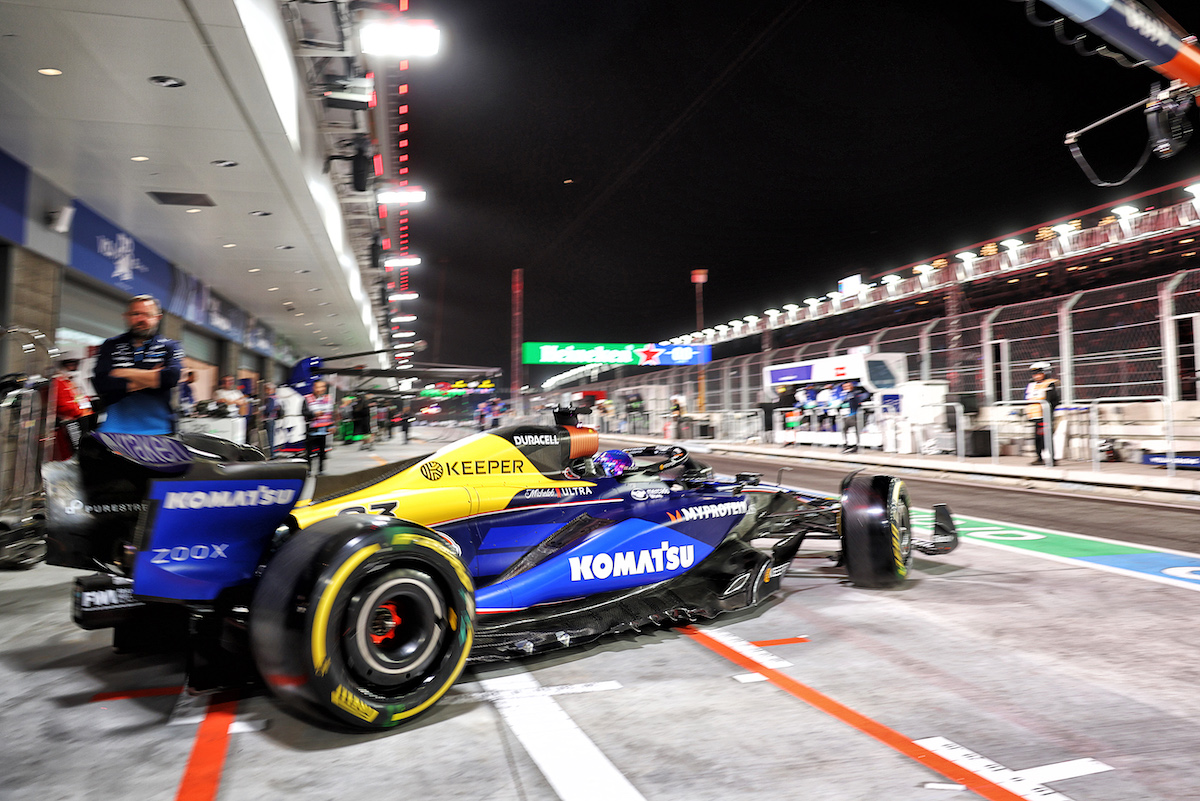Pirelli F1 Tyres Complete Eight Laps Of The Globe In 2023

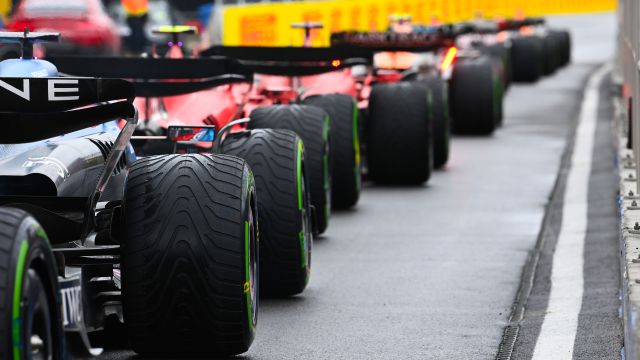
In total, Pirelli’s Formula 1 tyres drove nearly eight times around Earth’s circumference throughout the 22 Grands Prix that made up the 2023 season. Specifically, 307,925.8 kilometres were travelled over 60,473 laps by the 6,847 sets of tyres that were driven for at least one lap by drivers from the 10 teams that made up this year’s Formula 1 World Championship.
The overwhelming majority of that distance was covered on the slick tyres: only 6.31% of those kilometres were driven on the Cinturato Intermediate or Cinturato Extreme Wet. The key protagonist (unsurprisingly, as it was nominated for every race) was the C3: used for 105,499 kilometres, which is more than a third of the total distance driven (36.57%). The C4 was the second most-used compound, with 27.43% of the total, followed by the C2 (15.41%) and C5 (13.55%). The least-used compound was the C1, with 5.73% of the total distance. The 3,800 kilometres driven during grand prix weekends on prototype tyres also need to be added to the total: in Barcelona, Suzuka, and Mexico City.
The longest stint of the year was completed by McLaren’s Oscar Piastri at the Saudi Arabian Grand Prix. On only his second Formula 1 race appearance, the Australian was forced to stop at the end of lap one to change a damaged front wing following contact with Pierre Gasly. At the same time, he bolted on a set of C2 tyres that he drove all the way to the flag: a total distance of 302.5 kilometres. In doing so, Piastri went two kilometres further than Esteban Ocon, who drove a single set of C3 tyres for 302.5 kilometres in Baku after starting on them from the pit lane, before making his mandatory pit stop on the penultimate of 51 scheduled laps. The Azerbaijan street circuit was also the scene of the longest stint of the year on the softest compound: Valtteri Bottas completed the entire sprint race distance on Saturday afternoon (17 laps, equivalent to 102 kilometres) with a set of C5 tyres. Bottas also holds the record for the longest distance on the hardest compound; namely 32 laps (equivalent to 188.4 kilometres) at Silverstone. The longest stint on the C4 was completed by another Alfa Romeo driver: Guanyu Zhou, who used it for 212.7 kilometres in Singapore.
Throughout the 2023 season, there were three different weekend formats with specific rules relating to tyre use. A total of 14 races adopted the classic weekend schedule of three free practice sessions, qualifying, and the race, while there were also six Sprint weekends – with just one free practice on Friday, followed by race qualifying, and Saturday’s Sprint Shootout and Sprint race, before the Grand Prix on Sunday. Finally, the ATA (Alternative Tyre Allocation) format was trialled on two occasions, with the goal of looking at ways to manage tyre use more efficiently. About a thousand sets of slicks for the 22 events were never used, while another 732 were driven only for one to three laps. As for the extreme wet tyres, Pirelli adopted a ‘strip and fit’ methodology this year; allowing tyres that were fitted but never used to be carried over to other events. This will help the teams to improve their tyre management, given that in 2023, for example, 1,304 sets of intermediate and wet tyres never completed a lap.
The Dutch Grand Prix was the race with the most tyre changes this year (counting both ‘real’ pit stops and tyre changes under a red flag). Because the weather kept on changing, with intermittent rain, there were 82 tyre changes in total, using every type of tyre: the three slick compounds, intermediates, and extreme wets were all seen on tack at various points. By contrast, the race with the fewest tyre changes was Miami, where all 20 drivers carried out just their one obligatory pit stop under the rules. The total number of tyre changes during the year (considering the sprint races as well) was 871.
Austin proved to be the hottest race of the year in terms of ambient temperature, with 34.7 degrees centigrade on Saturday during the Sprint race and 32.8 degrees during Sunday’s Grand Prix. Zandvoort was the coolest, with an average temperature of 15.1 degrees. In terms of asphalt temperature, Hungaroring was the hottest race of the year with 53.6 degrees, while the coolest was Las Vegas with 18.5 degrees.
